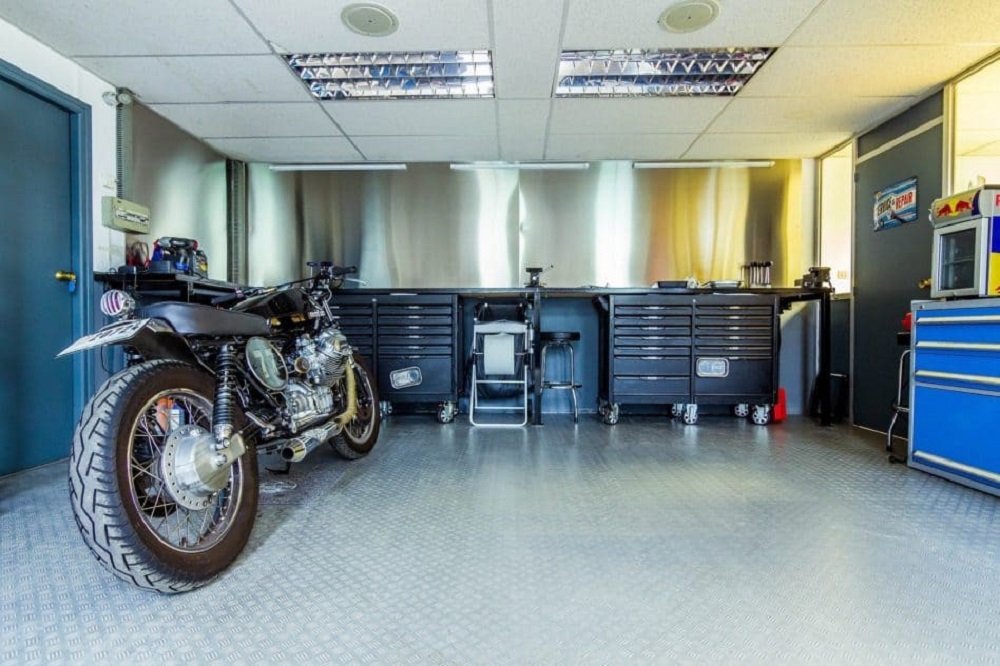While most of us think of our garages as a place to store cars and tools, the garage can be so much more. It’s not just an area for your car, but also a place where you spend time with your family and friends. A well-designed garage can be the perfect place for backyard BBQs, birthday parties, or even a new workshop where you can get creative!
Determine the number of lights you need
To determine how many lights you need, first consider the size of your garage. The larger it is, the more light you’ll want to illuminate it. Next, think about what kind of mood or atmosphere you’d like to create in your garage. If you’re looking for something bright and cheery that helps keep the space organized and uncluttered, then maybe one overhead fixture will do; but if you want something more dramatic–like an industrial-style look with dimmer lights scattered throughout–then multiple fixtures might be necessary.

If there’s one thing I’ve learned from years spent studying lighting systems (both professionally and personally), it’s this: It’s impossible for anyone who hasn’t actually installed a system firsthand to make an informed decision based solely on reading about them online or watching videos online or listening podcasts from experts online…and so on! So let me say again–the best way for any homeowner interested in installing new lighting is simply go out there yourself and see what works best for YOU!
Create a lighting plan
The first step in creating a lighting plan is to draw out the layout of your garage. This will help you determine how much space you have to work with, and whether there are any areas that could use some extra light.
You should also consider what kinds of tasks you’ll be doing in your garage and when. For example, if it’s mostly used as storage space for tools or other items, then there may not be much need for bright overhead lighting at all–but if most of its use involves working on cars or trucks (or even just tinkering around), then bright task lights might come in handy during those times.
Pick the right light bulbs
When it comes to choosing the right bulbs, there are a few things you should keep in mind.
- LED lights are more energy efficient than incandescent lights and CFLs. This means that they use less electricity and therefore cost less money over time. They also have a longer lifespan than both incandescent and CFL bulbs, which can save you even more money on replacement costs.
- For example: A 60W fluorescent bulb will burn for about 8 hours per day at full brightness (about 1/3 of its rated life). If we assume an average price of $1 per kilowatt hour (kWh), that means it costs $0.12 per day or about $4 per month in electricity alone! That’s not including any labor costs associated with changing out your old light fixture either; so if you were thinking about upgrading anyway then now might be a good time!
Choose a good location
The first step to setting up the perfect garage lighting system is choosing the right location. The best place for your lights is somewhere that’s easy to reach and won’t be in the way. Make sure you choose a spot that’s high enough off the ground so that you don’t have any tripping hazards, but also low enough so that you can see what you’re doing as well.
You’ll also want to make sure that there aren’t any objects nearby (like pipes or beams) where someone could break one of your bulbs if they were careless with them.
Consider your needs
The first step in setting up your garage lighting system is to consider your needs. Do you need lights for safety? Or maybe work? Maybe hobbies or family? Maybe even pets!
No matter what type of light is most important to you, there are many options available on the market today that can help meet those needs.
Conclusion
The key to a great garage lighting system is planning. You need to know what kind of light you want and where it will go before you start shopping around. Once you have an idea, then it’s time to get some quotes from local installers or contractors who specialize in this area!











